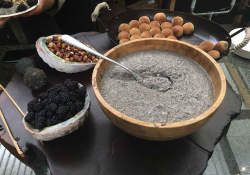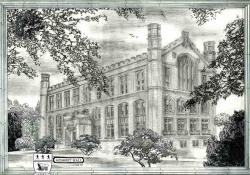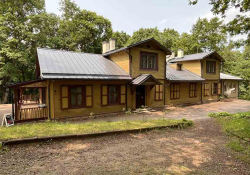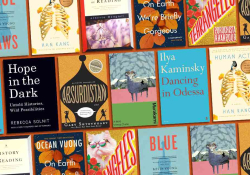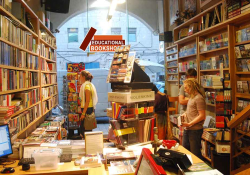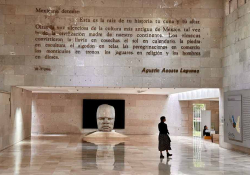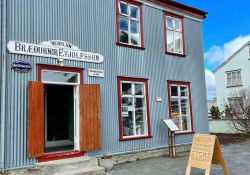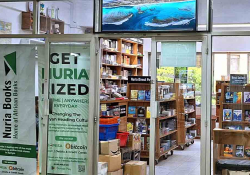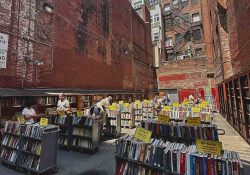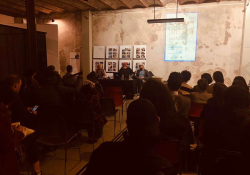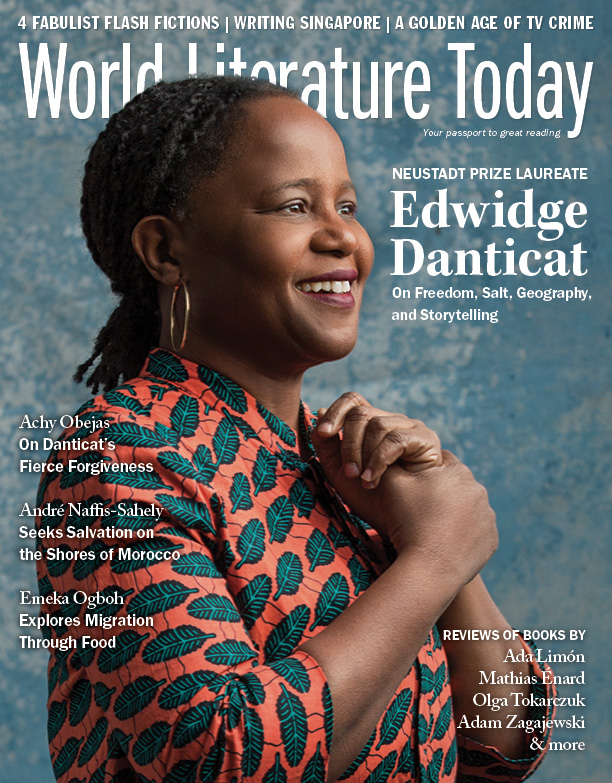Jawahar Kala Kendra
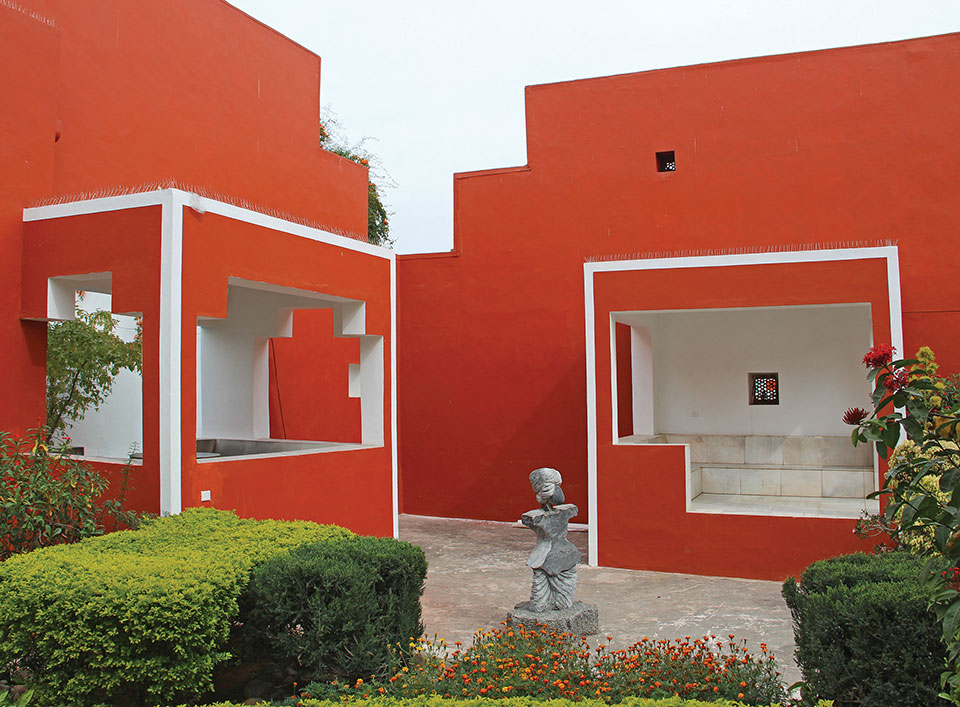
JAWAHAR KALA KENDRA (JKK), जवाहर कला केन्द्र, Jaipur’s art center, could be considered an oasis within a semidesert city. On any busy street of Jaipur, there are tiny temples, stray street dogs, and neon pink bougainvillea. It is easy to get lost in the haze of Indian traffic: Uber drivers shout over the cacophony of horns, and green and yellow autorickshaws rumble past motorcycles where women sit sidesaddle, their vibrant saris flowing behind them. In the chaos of Jaipur, it is difficult to find a single moment of silence. There is, however, something serene about the arts center; the incessant din of traffic, voices of fruit vendors, cows mooing, Bollywood music, or broadcasted prayer calls all disappear. For likely the first time of the day—walking into JKK—it is quiet.
The entrance of JKK is a lush garden where peacocks strut the greens. Plumeria trees that never seem to stop blooming line the walkway from the busy street to the peach gates. On certain afternoons, artisans sell jewelry, embroidered school supplies, pottery and hand-block printed textiles in the gardens. Some evenings, emerald-green parakeets and azure kingfishers frequent the gardens. Once inside the courtyard, the building opens into a series of open-air pavilions. Archways lead to painted domes, amphitheaters, cafés, and art galleries alike.
The history of India is still fresh within JKK. While Jaipur was the former capital of the Mughal Empire, a predominantly Muslim kingdom, the art that adorns the walls speaks to partition and the Hindu citizens of a modern India. But the memories of astrologer princes of the Mughal Empire are acknowledged with a mural of a palm reading at the entrance to the cinema. Even in the temporary art exhibit, India’s struggle for independence from the British is expressed through textiles; handspun textiles were a symbolic cornerstone in India’s fight for independence under Gandhi. Still today, textiles hold an important place in India’s identity and growing economy. Additionally, textiles can serve as an important means of creative expression. Art pieces showcased in the center’s galleries capture the evolution from the raw materials necessary to weave cloth by hand to modernist tapestries and postmodern interpretations of fabric.
Part of what makes JKK such a successful home for the arts is that it makes the arts accessible to everyone, thus providing a home for aspiring artists and artisans. In the center of the arts complex there is an open-air canteen. Waiters with swirled moustaches, wearing starched turbans, wait on the patrons, busily carrying platters of silver porcelain cups of chai. Artists, musicians, poets, students, and astrologers all frequent the café. Even in temperatures of 100 degrees, artists dabble in watercolors, and musicians pluck away on acoustic guitars in the shade of the jasmine-wrapped pavilion.
Open and free to the public, JKK offers comprehensive programs—its own library, international film festivals, Hindi and English plays, art exhibits—and the perfect, peaceful place for both artists and the public to gather and engage with the arts.
